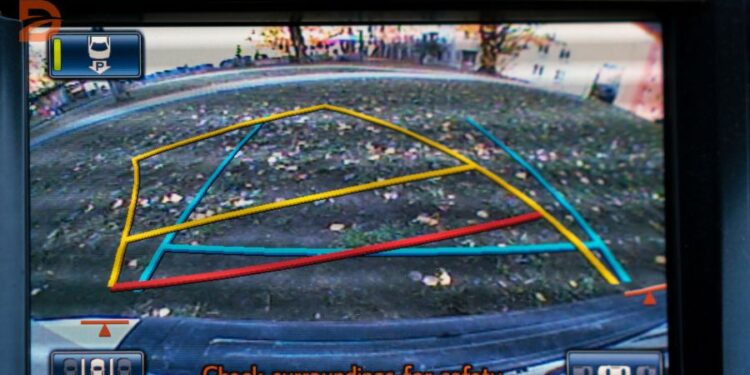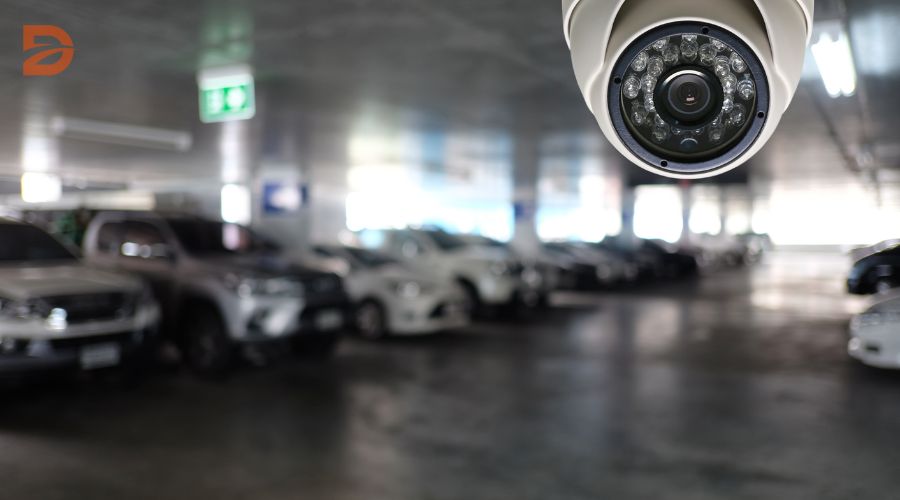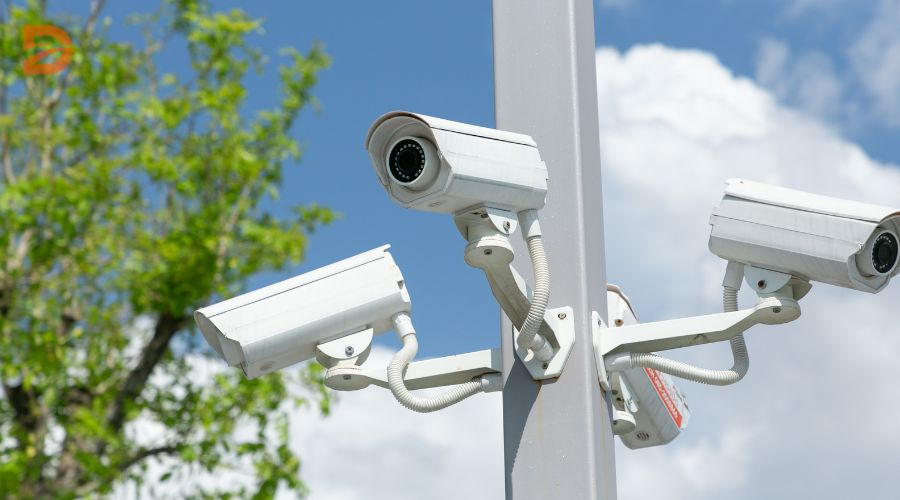According to a recent study, rearview cameras reduced backing crash involvement rates by a remarkable 17%. For drivers aged 70 and older, the reduction was even more substantial at 36%. This data highlights the transformative impact of backup camera technology in enhancing parking safety and preventing devastating accidents. As backup cameras become a mandatory feature in all new passenger vehicles starting in 2018, it’s clear that this cutting-edge technology is a crucial investment for any driver seeking to enhance their driving experience and protect themselves, their passengers, and those around them.
Backup cameras are revolutionizing the way we park our vehicles, providing real-time visual guidance to help drivers detect and avoid potential hazards. These cameras reduce blind spots, offering a wide-angle view of the critical areas behind the vehicle, effectively eliminating the guesswork and uncertainty that can lead to costly collisions.
Key Takeaways
- Backup cameras reduce backing crash involvement rates by up to 36% for drivers aged 70 and older.
- Rear parking sensor systems can lower backing crash involvement rates by as much as 34%.
- Backup cameras provide a wide-angle view to eliminate blind spots and enhance rear visibility.
- Integrating backup cameras with other safety systems offers a comprehensive safety net for drivers.
- Backup cameras are set to become a mandatory feature in all new passenger vehicles starting in 2018.
Enhancing Rear Visibility and Reducing Blind Spots
One of the primary benefits of backup cameras is their ability to enhance rear visibility and reduce blind spots. Traditional rearview mirrors often leave critical areas behind the vehicle unseen, but backup cameras provide a wide-angle view, ensuring drivers can see everything that’s going on behind their car. This improved perspective allows drivers to detect and avoid unexpected obstacles, such as low-lying objects, shopping carts, or even small children.
Enhanced Rear Visibility
Backup cameras have been shown to significantly reduce backover accidents overall by about 17%. Vehicles equipped with rearview cameras combined with automatic braking had an even more impressive 78% lower rate of backup-related accidents compared to vehicles without this technology. Rearview cameras are particularly effective in preventing accidents involving small children and objects low to the ground, which are often difficult to see in a traditional rearview mirror.
A federal regulation in the United States effective May 2018 mandates that all new passenger cars, trucks, vans, and other vehicles weighing less than 10,000 pounds must be equipped with rear visibility technology. While backup cameras have become a standard feature, it’s important to note that overreliance on them can lead to accidents, especially if the camera’s view is obstructed or distorted by environmental factors like rain, fog, or dirt. Additionally, backup cameras may not capture all hazards, particularly those outside their field of view, creating critical blind spots in crowded environments like parking lots.
| Feature | Benefit |
|---|---|
| Backup cameras | Reduce blind spots and provide a wide-angle view to see critical areas behind the vehicle, helping to prevent collisions with objects, pedestrians, and other vehicles. |
| Fender bender prevention | Backup cameras minimize fender benders, leading to cost savings on repairs and insurance premiums. |
| Parking assistance | Backup cameras aid in parking in tight spaces, reducing stress associated with crowded parking environments. |
Backup Cameras: A Lifesaver in Preventing Accidents
Backup cameras are not just a convenient feature, but a true lifesaver when it comes to preventing accidents. According to the Kids and Cars website, at least fifty children are backed over by vehicles every week in the United States. Backup cameras provide a clear view of the area behind the vehicle, reducing the likelihood of collisions with objects, pedestrians, or other vehicles. This is particularly beneficial in crowded parking lots or residential areas where unexpected obstacles are common.
By minimizing the risk of fender benders and backing over incidents, backup cameras can save drivers money on repairs and insurance premiums while protecting the lives of vulnerable road users. In 2018, backup cameras became a standard feature on all vehicles made for the American market, a testament to their importance in enhancing accident prevention and collision avoidance.
“Backup cameras are considered so important that most cars and SUVs have been offering them for a long time prior to the mandatory installation requirement from May 2018.”
The rise of backup cameras can be attributed to the ongoing evolution of car technology. Features once considered luxuries, such as heated and cooled seats, keyless entry, and start, are now standard in many new vehicles. Similarly, emerging technologies like automatic braking, lane departure warning, and park assist systems are expected to become common shortly, further empowering drivers to navigate safely and avoid potential fender benders and pedestrian safety incidents.
As the automotive industry continues to prioritize driver and passenger safety, the integration of backup cameras has proven to be a game-changer in preventing accidents and protecting the most vulnerable road users.
Backup cameras, parking safety
Backup cameras have become an indispensable tool for drivers, transforming the way we park our vehicles. These innovative technologies play a crucial role in enhancing parking safety, making the process smoother and more stress-free, especially when navigating tight spaces or parallel parking. With the help of backup cameras, drivers can now enjoy a clear view of the area behind their vehicle, reducing the risk of collisions and damage to their cars or surrounding vehicles.
One of the key benefits of backup cameras is their ability to eliminate blind spots, providing drivers with enhanced rear visibility. This is particularly useful when maneuvering in tight spaces or attempting parallel parking, a task that can often be daunting for many drivers. Backup cameras take the guesswork out of the equation, allowing drivers to execute these maneuvers with precision and confidence.
| Product | Price | Features |
|---|---|---|
| Type S T400 PLUS 4K AI Dash Cam | $249.99 | 6 AI driver assistance features |
| Type S Wireless Solar Powered Parking Assistance Camera Set with 6.8″ Touchscreen Monitor | $239.99 | Seamless installation, HD 720P resolution |
| Type S Add-On Wireless & Solar Powered HD Parking Camera | $129.99 | 160° wide-angle view |
| Type S Solar Powered Smart 1080p HD Backup Camera | $99.99 | 100% wireless setup |
The prices of backup camera products for parking safety range from $39.99 to $349.99, catering to a wide range of budgets and preferences. Many of these cameras offer advanced features, such as wide-angle lenses, infrared illuminators, and sensitive sensors, ensuring clear and accurate visual feedback for drivers.
Overall, backup cameras have revolutionized the way we approach parking, making the process safer, more efficient, and significantly less stressful. Whether you’re navigating tight spaces or attempting parallel parking, these innovative technologies provide the necessary tools to ensure a stress-free and confident parking experience.
Nighttime Safety: Enhancing Low-Light Visibility
Driving at night presents its own set of challenges, but backup cameras equipped with night vision capabilities can significantly improve safety. These advanced cameras use cutting-edge technology to provide clear, high-quality images even in low-light conditions, ensuring drivers can see and avoid obstacles in the dark.
Improved Night Vision Capabilities
Backup cameras designed for nighttime use enhance visibility during dusk, dawn, and nighttime hours, making reversing and parking safer in low-light conditions. This added safety feature is invaluable for nighttime drivers, providing them with the confidence and peace of mind they need to navigate the roads safely.
Studies show that backup cameras can reduce the risk of accidents involving objects or pedestrians, significantly improving safety for drivers and pedestrians alike. High-resolution backup cameras with night vision settings are crucial for clear visibility in low-light conditions, ensuring safer parking maneuvers.
“Backup cameras equipped with night vision capabilities can significantly improve safety, providing drivers with clear visibility even in the darkest conditions.”
Wider fields of view on backup cameras enhance visibility behind vehicles, making them ideal for drivers of large vehicles or parking in tight spaces. The two types of backup camera installations – wireless and wired – offer different advantages, with wireless cameras being easier to install but potentially affected by signal weakening, while wired cameras provide a stable connection but are harder to install.
When choosing a backup camera, it’s essential to consider factors like durability, image quality, and additional features like motion detection and parking guides. By investing in a high-quality backup camera, drivers can enhance their nighttime safety and enjoy a more confident, stress-free driving experience.
Empowering Drivers with Limited Mobility
Backup cameras aren’t just for tech-savvy drivers; they are incredibly beneficial for those with limited mobility or older drivers. These cameras reduce the need for physical strain while turning to check blind spots, making driving easier and safer for everyone. For elderly drivers, maintaining independence is crucial, and backup cameras provide the additional assistance needed to ensure safe driving practices.
This technology empowers older drivers to continue driving safely and independently, enhancing their quality of life and allowing them to remain mobile. By 2050, it is projected that one in every four licensed drivers will be an older adult, highlighting the growing importance of accessible driving solutions.
Adaptive strategies, such as regular health check-ups, vision and hearing assessments, attending defensive driving courses, and physical and mental activity, can help older adults navigate age-related challenges while driving safely. Backup cameras and other driver assistance technologies play a pivotal role in this process, empowering drivers with limited mobility to maintain their independence and stay on the road.
“Sue Keiss, a 59-year-old with moderate hearing loss, mentioned that her hearing aids enable her to drive safely and hear horns and sirens while on the road.”
The National Highway Traffic Safety Administration (NHTSA) offers an online self-assessment tool to evaluate a person’s fitness to drive, covering aspects like hearing, vision, physical fitness, and reaction time. This resource empowers drivers to proactively address any limitations and ensure their safety on the road.
- Backup cameras provide enhanced rear visibility, reducing the need for physical strain while turning to check blind spots.
- Automated parking systems assist drivers, including those with limited mobility, in parking, eliminating the need for difficult maneuvers like parallel parking.
- Forward collision warning systems alert drivers when approaching vehicles too closely, promoting safer driving practices.
- Customizable controls cater to people with disabilities, providing a more inclusive driving experience by adapting to individual needs and limitations.
By embracing backup cameras and other driver assistance technologies, the driving experience becomes more accessible and empowering for individuals with limited mobility, allowing them to maintain their independence and stay connected to their communities.
Conclusion
Backup cameras have emerged as a vital addition to modern vehicles, significantly enhancing driving safety and convenience. From reducing blind spots and preventing accidents to making parking easier and safer even in low-light conditions, this transformative technology offers numerous benefits that drivers can no longer afford to ignore.
As backup cameras become a legal requirement for all new vehicles in the United States, drivers can expect to see a substantial reduction in backing-related crashes and increased peace of mind when navigating parking lots and driveways. With ongoing advancements in camera quality, connectivity, and integration with other safety systems, the safety advantages of backup cameras will continue to grow, empowering drivers to navigate with greater confidence and security.
Investing in a backup camera is a smart move for any driver looking to improve their safety on the road. By leveraging this lifesaving technology, drivers can enjoy enhanced visibility, prevent collisions, and minimize the risk of costly fender benders, all while reducing the stress and anxiety associated with parking and backing maneuvers. The integration of backup cameras into the modern vehicle landscape is a testament to the relentless pursuit of driving safety and the unwavering commitment to protecting both drivers and pedestrians alike.
FAQ
What are the main benefits of using a backup camera?
Backup cameras enhance rear visibility, reduce blind spots, prevent accidents, make parking easier and safer, and improve visibility in low-light conditions. They are particularly beneficial for drivers with limited mobility or older drivers who need additional assistance.
How do backup cameras improve rear visibility and reduce blind spots?
Backup cameras provide a wide-angle view, ensuring drivers can see everything behind their vehicle and eliminate blind spots. This improved perspective allows drivers to detect and avoid unexpected obstacles, enhancing overall safety.
How do backup cameras help prevent accidents?
Backup cameras significantly reduce the likelihood of collisions with objects, pedestrians, or other vehicles, especially in crowded parking lots or residential areas. They can save lives and prevent costly repairs by minimizing the risk of backing over incidents.
How do backup cameras make parking easier and safer?
Backup cameras take the guesswork out of navigating tight spaces and parallel parking, allowing drivers to execute these maneuvers with precision and confidence. They enhance the overall parking experience, reducing the risk of damaging one’s vehicle or others.
How do backup cameras improve nighttime driving safety?
Backup cameras equipped with night vision capabilities provide clear images even in low-light conditions, ensuring drivers can see and avoid obstacles during dusk, dawn, and nighttime hours. This feature is invaluable for enhancing safety when driving at night.
How do backup cameras benefit drivers with limited mobility or older drivers?
Backup cameras reduce the need for physical strain when turning to check blind spots, making driving easier and safer for everyone. For elderly drivers, this technology empowers them to maintain their independence and continue driving safely.










